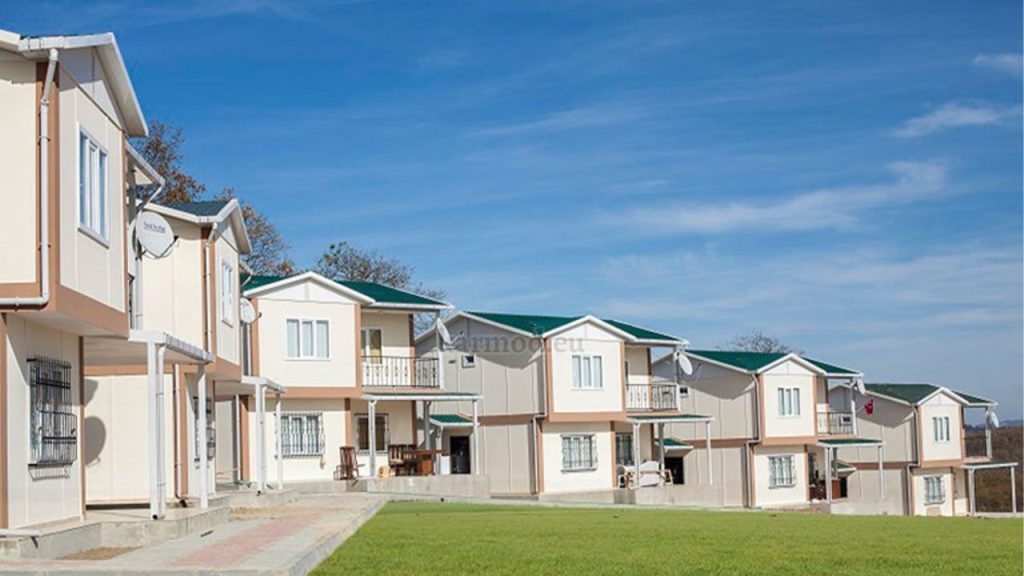For many South Africans living on low incomes, the dream of homeownership has often felt out of reach. However, that could soon change as the government opens nationwide applications in July 2025 for free RDP (Reconstruction and Development Programme) homes. Tailored specifically for individuals and families earning under R3,500 per month, this initiative represents a major step toward addressing housing inequality and offering secure, dignified shelter. As this limited-time opportunity becomes available, eligible citizens are encouraged to prepare thoroughly and act promptly to ensure their chance at a new beginning.
Table of Contents
Unpacking the Vision Behind the RDP Housing Initiative
The RDP housing programme was established as part of a broader effort to address historical imbalances in housing distribution and to combat poverty through permanent shelter. These government-subsidized homes are offered at no cost to qualifying citizens, providing not only a roof over one’s head but also a chance to build a life within a stable environment. Each home typically includes two bedrooms and essential amenities, and they are constructed in areas with access to key services like clean water and electricity. This programme is designed to support economic growth through housing security for the most financially vulnerable groups.
Who Can Qualify for These Government-Backed Homes?
To ensure that the RDP homes reach those most in need, the programme enforces strict eligibility requirements. Applicants must be South African citizens or hold permanent residency, and their household income must not exceed R3,500 per month. In addition, candidates must be over the age of 21 and capable of signing contracts. Priority is given to those who have never owned property or received housing subsidies before. Preference is also shown to families with dependents or married individuals, as the initiative aims to uplift entire households and promote long-term stability.
Getting Ready to Apply for Your RDP Home in July
The application window for RDP homes opens in July 2025, and preparing your documents in advance will give you the best chance of success. Applicants will need to gather several key documents, including their ID or proof of permanent residency, proof of income or unemployment status, marriage certificates or proof of dependents, and an affidavit confirming they have never received a housing benefit before. Once ready, applicants should visit their nearest municipal office to submit their completed application forms and await feedback from the Department of Human Settlements.
Key Documents That Ensure a Smooth Application Process

Applying for a government-subsidized home requires a complete and accurate document submission. A certified copy of a valid South African ID is essential, along with proof of income or unemployment, depending on your status. Married applicants must include their marriage certificate, while those with children should provide birth certificates of dependents. An affidavit must be submitted confirming that the applicant has never previously owned property or benefited from another housing scheme. Having all documents correctly prepared in advance can significantly speed up the evaluation and allocation process.
Transformative Benefits of Securing an RDP Home
Owning a free RDP home delivers far more than financial relief it represents an opportunity to escape the uncertainty of rent or informal housing. These homes bring with them safety, permanence, and a solid foundation for families to grow. Living in a stable environment improves children’s education outcomes and enables better access to healthcare and employment opportunities. Communities formed through RDP housing also benefit from shared infrastructure such as clinics, schools, and public transport, helping to foster inclusive development and uplift entire neighbourhoods.
Hurdles in the Path to Homeownership Through RDP
While the programme has helped many, it is not without its challenges. High demand for RDP housing often results in long waiting times, especially in urban centres. There are also delays in construction and occasional administrative backlogs in processing applications. Some beneficiaries may be allocated homes in areas far from their original communities, which can create issues related to commuting and adjusting to new environments. Despite these challenges, the government continues to improve systems to make the RDP process more transparent and efficient.
Staying Informed and Tracking Your RDP Application Status
Once your application has been submitted, it’s important to remain engaged and informed throughout the process. Applicants should stay in touch with their municipal housing departments and monitor government websites for updates. Maintaining a record of your submission and correspondence can be useful in case follow-ups are needed. Engaging with local community forums or support groups can also provide helpful guidance and first-hand advice from others who have been through the application journey.
Embracing the Transition into Your New RDP Home
If approved, transitioning into an RDP home marks a life-changing moment that requires thoughtful planning. New homeowners should attend any orientation or briefings offered by housing officials to understand their rights and responsibilities. It’s important to become familiar with community guidelines, local services, and facilities. Making early connections with neighbours and community leaders can ease the transition and help build a supportive environment. Ultimately, moving into an RDP home provides not only shelter but a real opportunity to break the cycle of poverty and start anew.
The RDP housing application period in July 2025 could be the turning point for many South Africans striving for a better future. With preparation, attention to detail, and timely action, the door to permanent homeownership may soon open for thousands across the nation.


